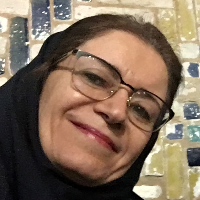Measurement and analyzing daylight condition in traditional Kerman houses(Aminian house)*
Author(s):
Abstract:
Natural light has a great effect on the health of human beings. Studies on Iranian old houses show that various apertures were used to provide natural light in the interior spaces of the buildings. In the present research attempt has been made to measure the extent to which some of the lightening methods of Iranian traditional architecture have been successful in the provision of interior lightening with respect to the various experiences of Iranian architecture on the provision of interior lightening. Therefore the following research question is formulated: Does the variety of apertures in traditional houses lead to better use of lighting and heating sources in the interior spaces? To answer the question in this article a sample of such houses in Kerman has been chosen، simulated and the amounts of daylight level measurements of selected rooms has been studied. The house has several rooms، one of them with skylight roof (kolah farangy) and the others with door-windows into the yard (seh dari and panj dari). Monitoring has been under the clear sky. The value of the illuminance of the rooms has been measured by photometer and simulators with the aid of Ecotect software (by radiance calculation support). Finally light distribution method، the value of illuminance and heat of the said spaces have been compared and the results were analyzed. The results have shown that the average and the least illuminance values of the room to the west are 154. 92 lux and 75. 7 lux، the room facing south 4. 3 k lux and 157 lux and the room with skylight 266. 92 lux and 200 lux respectively. The results from simulators also indicate that 76 % of the area of the rooms facing south needs ancillary light during a year. Only 26 % of the area of the room has appropriate light. It is mainly around midday. Therefore it is suitable for resting and general affairs. 48 % of the area of the room facing west has appropriate light all over a year. 45 % of the area of the room at some hours particularly in the morning and sometimes at noon needs ancillary light during a year. Glare happens at 7 % of the area of the room beside window particularly in the afternoon. There is little even lightening in this room. It is suitable to do general and visual activities only for a short time. 83% of the room with skylight has appropriate light all over a year. Only 7% of the room needs ancillary light during a year. Glare is likely to happen for nearly 1 % in this room. The amount of the light evenness is very high. It is completely suitable to do general and visual activities in it. Generally speaking the study of an Iranian traditional house has shown that the variety of apertures in traditional houses has positive effects on the amount of cooling and lighting. It has also been affected by the site location، the building relationship with outer space and its performance
Keywords:
Language:
Persian
Published:
HOnar - ha - ye - ziba Memari - va - shahrsazi, Volume:18 Issue: 2, 2014
Pages:
17 to 26
https://www.magiran.com/p1290863
سامانه نویسندگان
مقالات دیگری از این نویسنده (گان)
-
Investigating the effect of neighboring buildings’ orientation and the passage on the amount of energy consumption (case example: common residential buildings in Tehran)
Meysam Zekavat, Mansoure Tahbaz*, Mohammadreza Hafezi
Journal of Applied Researches in Geographical Sciences, -
Classification and extraction of architectural plan features using machine learning methods; Case study: Traditional houses of Bandar Kong
Mona Mohtaj, *, Atefeh Dehghan Touranposhti
Journal of Iranian Architecture and Urbanism,


